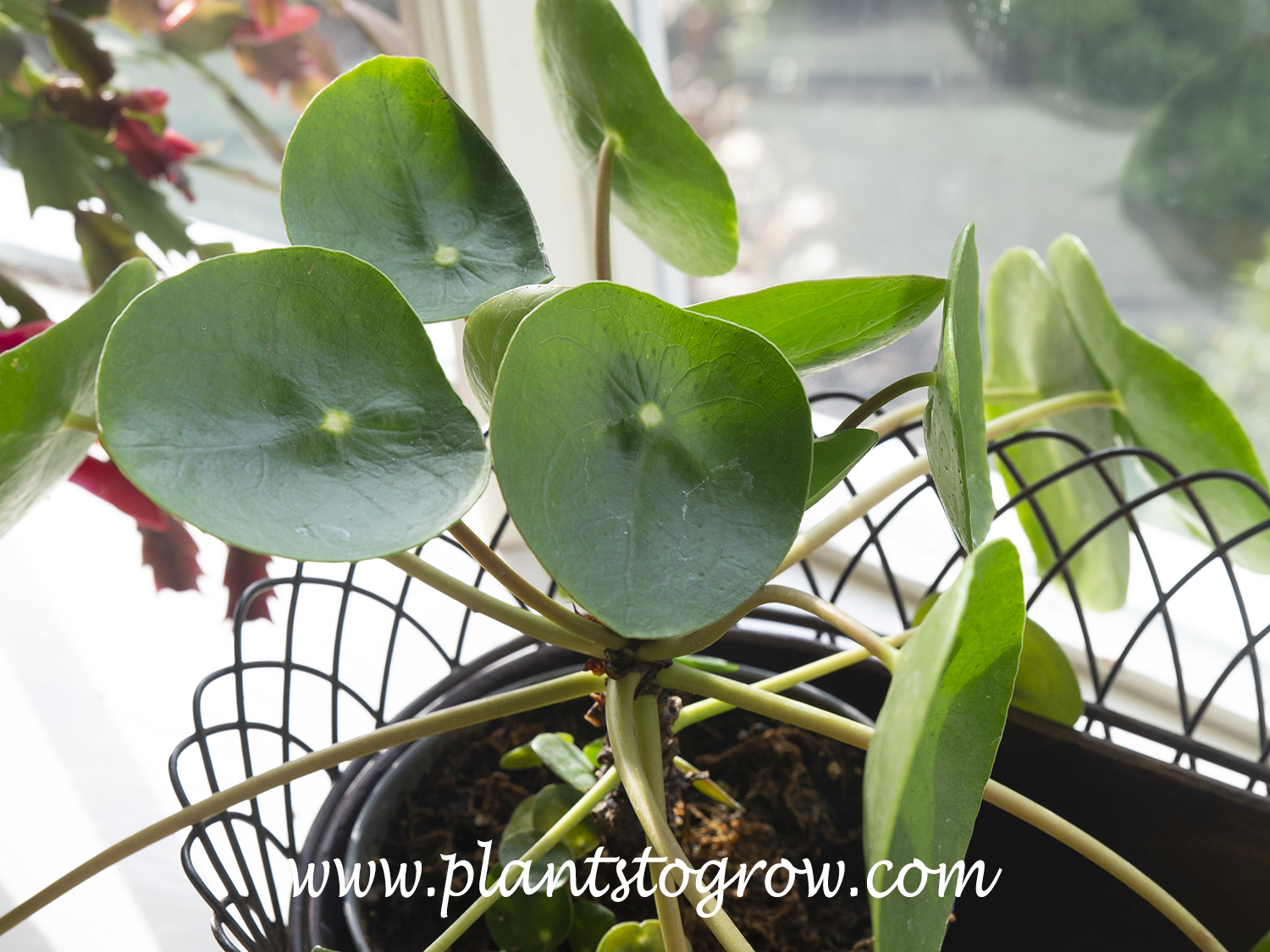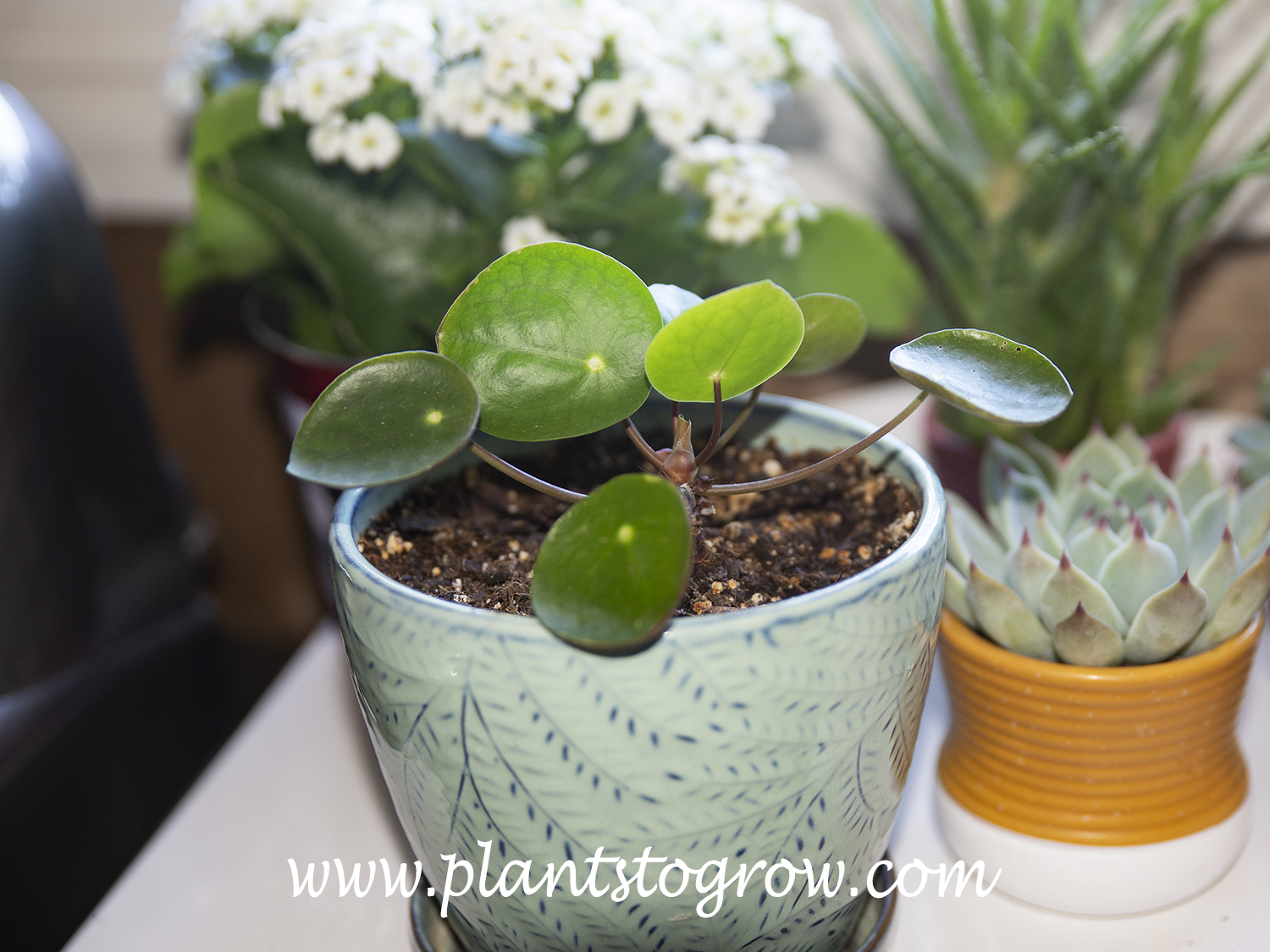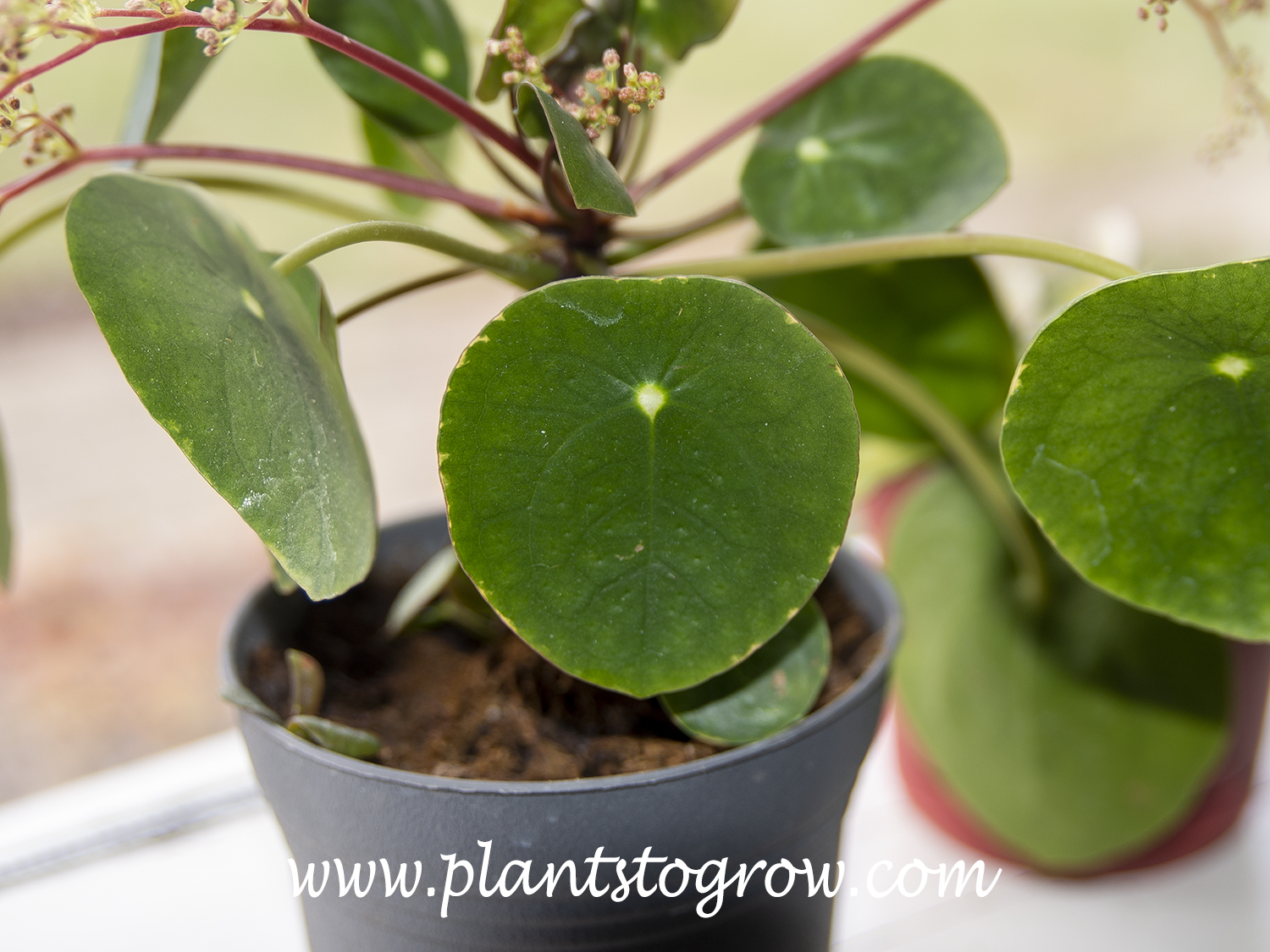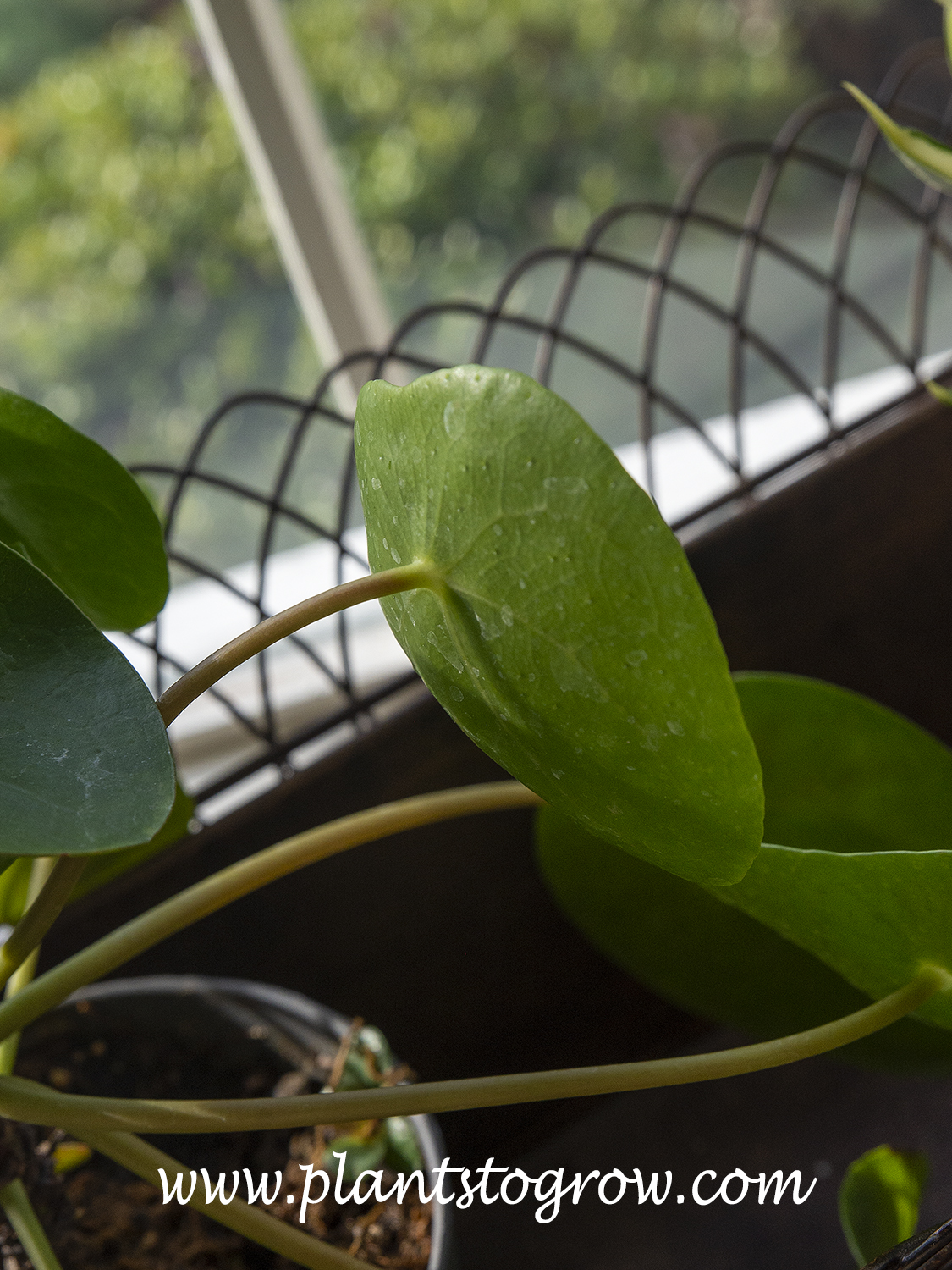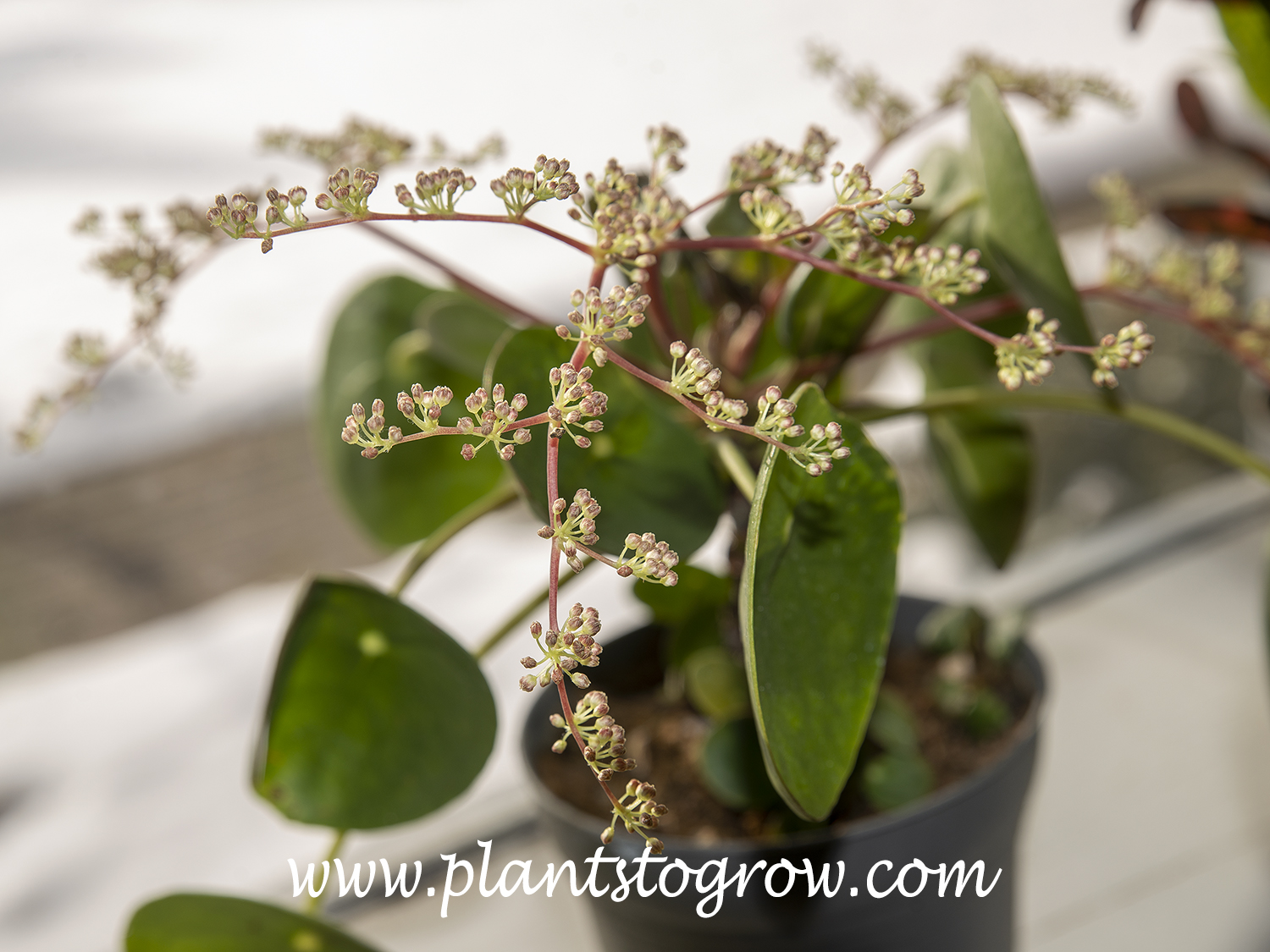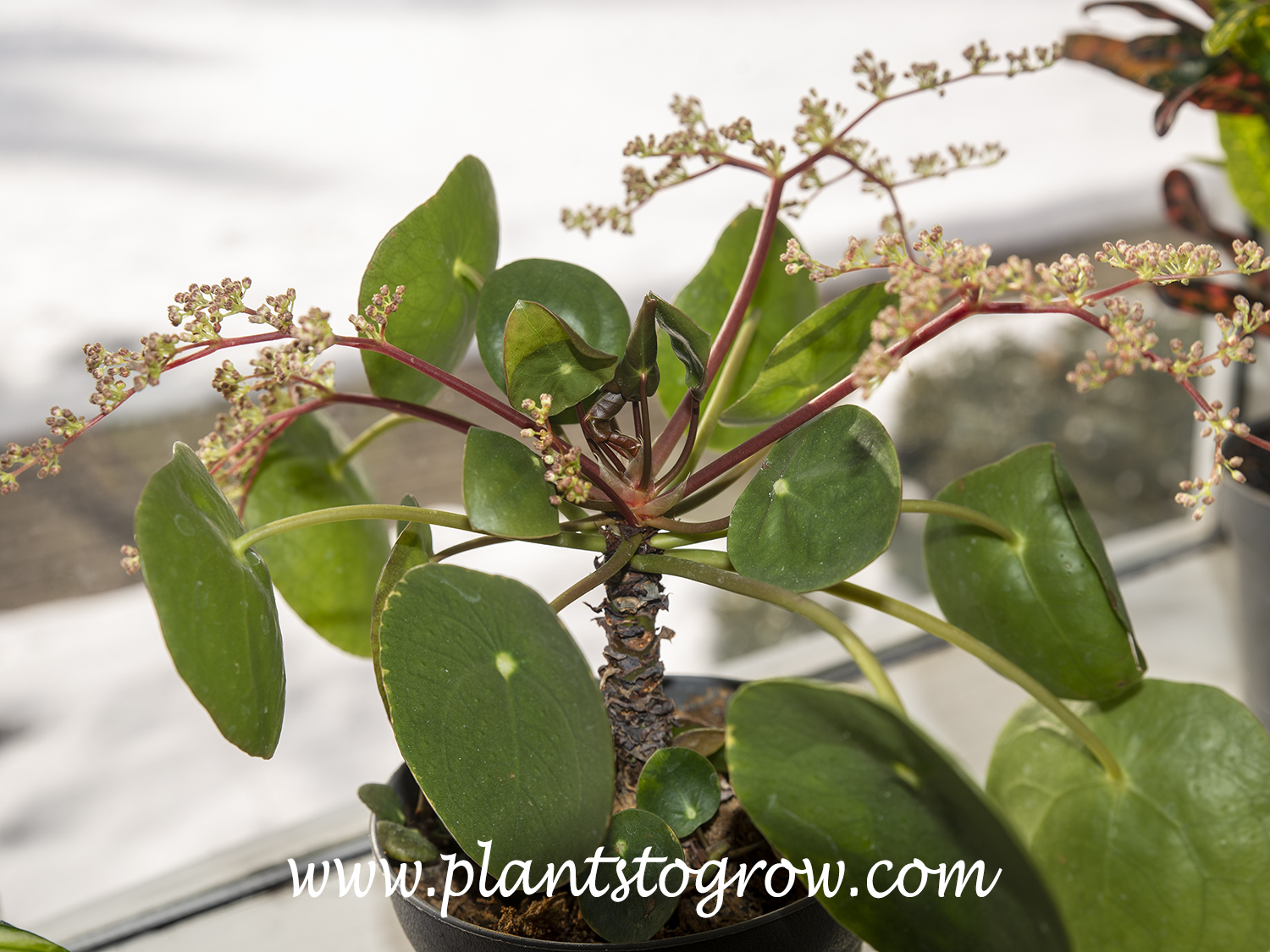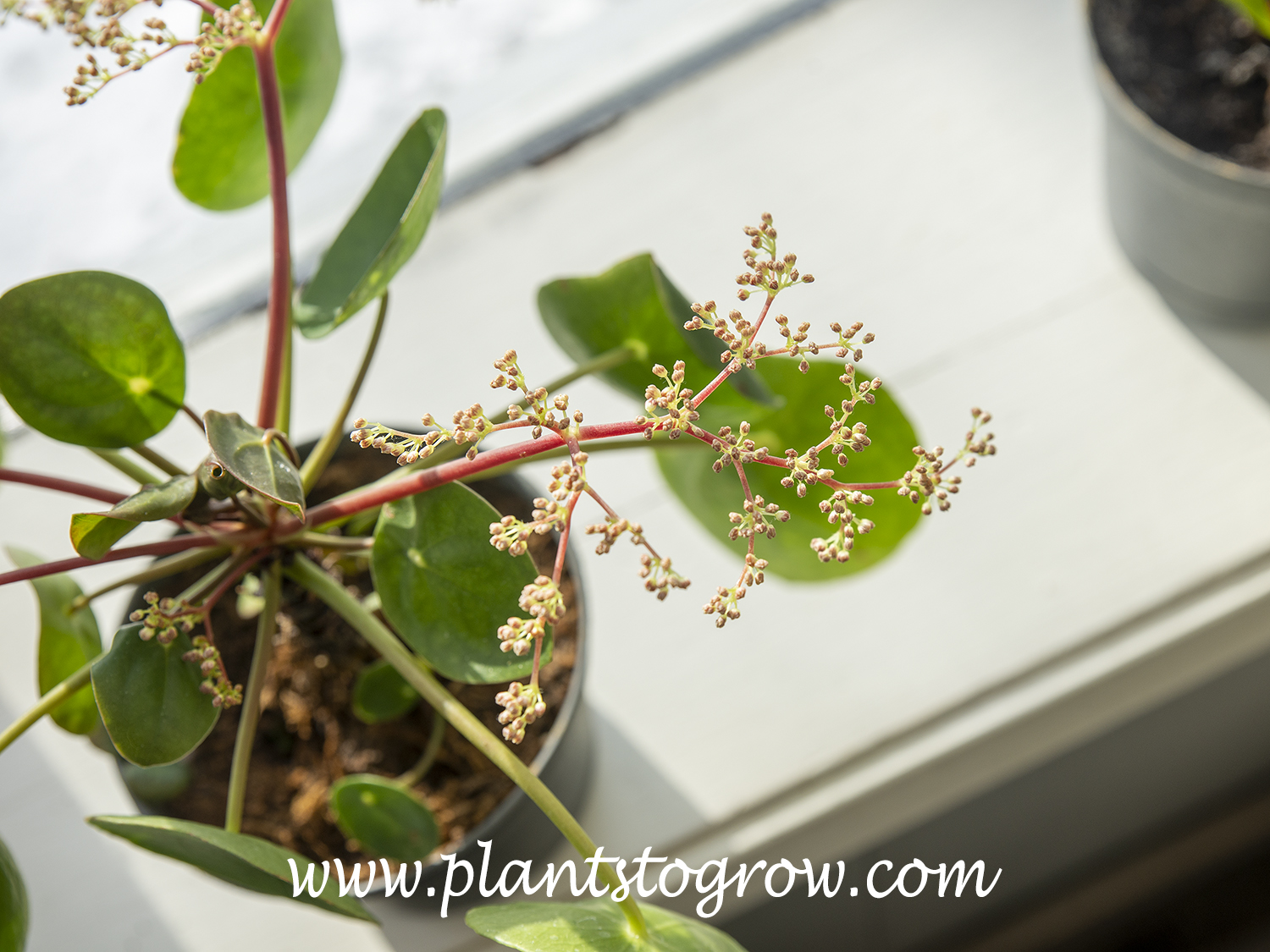| Description | Chinese Money Plant (Pilea peperomioides) is an evergreen tender perennial that is relatively easy to grow as a house plant. |
|---|---|
| Pronunciation | (py-LEE-uh) |
| Plant Type | Indoor Foliage, Perennial Tender, Site author's observations, Tropical herbaceous plants |
| Hardiness Zone | 9-10 (?) |
| Sunlight | bright light, even direct depending on the time of the year |
| Moisture | slightly dry, dry to the touch, wet soils can cause problems |
| Growing Media | average house, well-drained |
| Flowers | It is not grown for its flowers. It needs some subjection to cool temperatures to get to flowers. The detailed botanical description of the flower is hard to find. For sure, it is an inflorescence, maybe a chyme. |
| Leaves | glossy green, circular (orbicular), peltate (petiole attached to the back) |
| Stems | stiff, upright, when a leaf falls off, it leaves a leaf scar *reminds of the stems on a Washington Palm (Washingtonia robusta), just on a much smaller scale |
| Maintenance | very little, removing dead leaves, deadheading to remove the flowers (if you do not want flowers) |
| Propagation | The most common method is the division of basal offsets. Stem cutting can be rooted. |
| Native Site | Southern China in the provinces of Yunnan and Sichuan |
| Cultivar Origin | In the late 1970's Kew botanist, Wessel Marais suggested that the plant was a Chinese species of Pilea which had been named in 1912 by the German botanist Friedrich Diels as P. peperomioides, a singularly appropriate name. |
| Misc Facts | "Even though it had been described in 1912, it had been forgotten about for almost 30 years. Then in 1946, it was rediscovered and brought to Norway by a Norwegian missionary Agnar Espegren, upon Chairman Mao's expulsion of religion and foreigners. From Norway, it was distributed by friends to friends and eventually all over the world as a houseplant. Because there was never really any public demand for this plant, it was never commercially grown until the late 2010s." (The Sill) |
| Notes & Reference | #274-Site Authors' observations and growing experiences, A Chinese puzzle solved - Pilea peperomioides (http://www.wildchicken.com/nature/garden/ga008_a_chinese_puzzle.htm) is probably the best reference source for this plant, The Sill (www.thesill.com/blog/how-to-care-for-pilea-peperomioides) |

Cart
